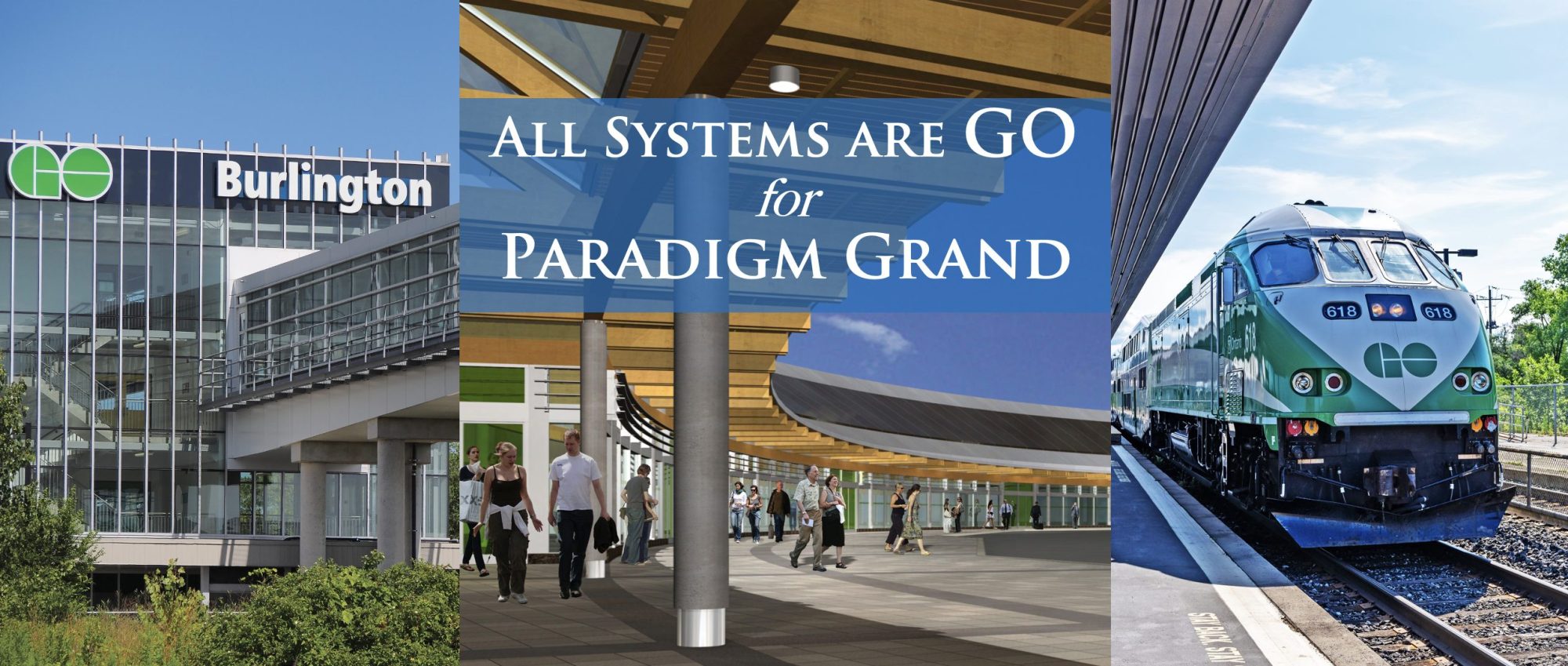The genius of locating Burlington’s landmark condominium community next to the GO Transit station is placed in ever sharper relief with the passage of time. Politicians have only recently caught up to the Molinaro Group’s vision and created a blueprint to formally adopt the proven concept of “transit-oriented communities.”
There’s an expression that goes: “ everything old is new again.” What the Molinaro Group did on such a large scale was brave, daring and ultimately futuristic based on recent government actions. There’s another saying: “imitation is the sincerest form of flattery.” Please excuse us while we take a bow.
Residential development along public transit lines is an idea with staying power. It’s long been the default lifestyle in major European centres out of practical necessity; narrow, winding streets are a permanent feature of cities founded originally as fortresses centuries ago.
Generations of London, Paris, and Vienna residents, for example, take public transit for granted. Trains and streetcars in Europe are clean, fast, efficient and economical. Cars are unnecessary for most city dwellers and long, slow commutes are unheard of.
The Molinaro Group based its Paradigm Grand on the durability of this concept, building the landmark high-density, lifestyle condominium next door to the Burlington GO station.
Uncommon practice then, the decision looks positively visionary in hindsight, even as the final phase of the midtown project is now selling and under construction.
The irony is that the Molinaro Group took it upon itself to choose this location almost 20 years ago, independent of outside influence and despite resistance. Only now are municipal and provincial governments tripping over each other trying to mandate more such development.
One of the most informative studies on the topic, authored by two, University of Toronto professors, is barely two years old. It details the research that led to the 2020 passing of the Ontario government’s Transit-Oriented Communities Act.
Click here for a deeper dive, but it’s remarkable that ground-breaking for the original Paradigm pre-dates this government measure by almost 15 years!
Hearing the words of U of T Professor, Matti Siemiatycki, you might get the impression the Molinaros’ vision served as inspiration for Queen’s Park’s decision to launch a 10-year, $145 billion plan to upgrade public transit with specific emphasis on linking transit to community development.
Professor Siemiatycki says transit-oriented communities are at the heart of this investment. “Transit-oriented communities are really made up of three key characteristics: the first is density; you want a tight, compact area with a lot of people, building and activity within close proximity of the station. That’s usually within a 10-15 minute walk from the station.
Second, is diversity of usage. The key is to have a mix of uses around these stations so they are activated and animated throughout the day. Finally, there’s high-quality design. The goal is to have high-quality design so the neighbourhoods are appealing and walkable, and that people want to spend time in these neighbourhoods.
“This approach really drives better community-building, and it drives higher transit usage on the systems that are being built,” he says.
He doesn’t mention it by name, but the professor might as well be describing the evolving midtown Burlington neighbourhood around Paradigm Grand.
Early investors in Paradigm saw the value proposition long ago and many use the GO line for a stress-free commute to downtown Toronto and beyond, for work and play. With two new towers incorporating residential, office and commercial retail space coming on line, there is still time to get in on Paradigm and reap the same benefits, and more.
Future GO line expansion is on the table, too; there will be more opportunities to live in smaller, more relaxed communities along the western shore of Lake Ontario, while remaining close to work and amenities in the bordering metropolis.
It’s easy to see the reflection of Burlington and Paradigm Grand, in this paragraph from the U of T study: “(Transit-oriented communities) co-locate housing, jobs, public amenities and social services near high quality public transit. This maximizes the public benefits that come from major investments in public transit. Increased ridership on transit systems is spurred by a planning process that encourages the location of housing and jobs nearby. This, in turn, cultivates healthy, sustainable, vibrant communities.”
By 2040, daily, comprehensive GO train service is projected to expand further south along the lake to bedroom communities in the amalgamated municipality of Hamilton-Wentworth (including Stoney Creek), St. Catharines, and Niagara Falls, making daily commutes to those cities more viable for transit users.
This is exciting news for many reasons and has major implications for the real estate industry, property owners, prospective buyers and municipalities. It foresees not only the possibility of a more sustainable, less car-centric society, but greater connectivity between the entire network of smaller, more liveable and affordable communities in the region. As the profs note in their study, these communities will benefit from broader tax bases and ripples of prosperity as builders race to accommodate demand for new housing.
As the Molinaro Group’s management team of President, Vince, Executive V-P, Robert, and Managing Director Sam DiSanto are fond of saying, the company’s late Founder, Domenic, “frequently saw what no else could see” when he started building in Burlington decades ago.
DiSanto puts it plainly: “We owe our success in Burlington to my father in-law, who had the vision to say ‘why aren’t people investing in this town? It’s fantastic here!’”
What they are witnessing now is not so much vindication after facing delays and push-back on their design, as much as further validation of their faith in Burlington, and the concept of Paradigm Grand as a self-contained, transit-oriented community that’s become a template for social policy.

